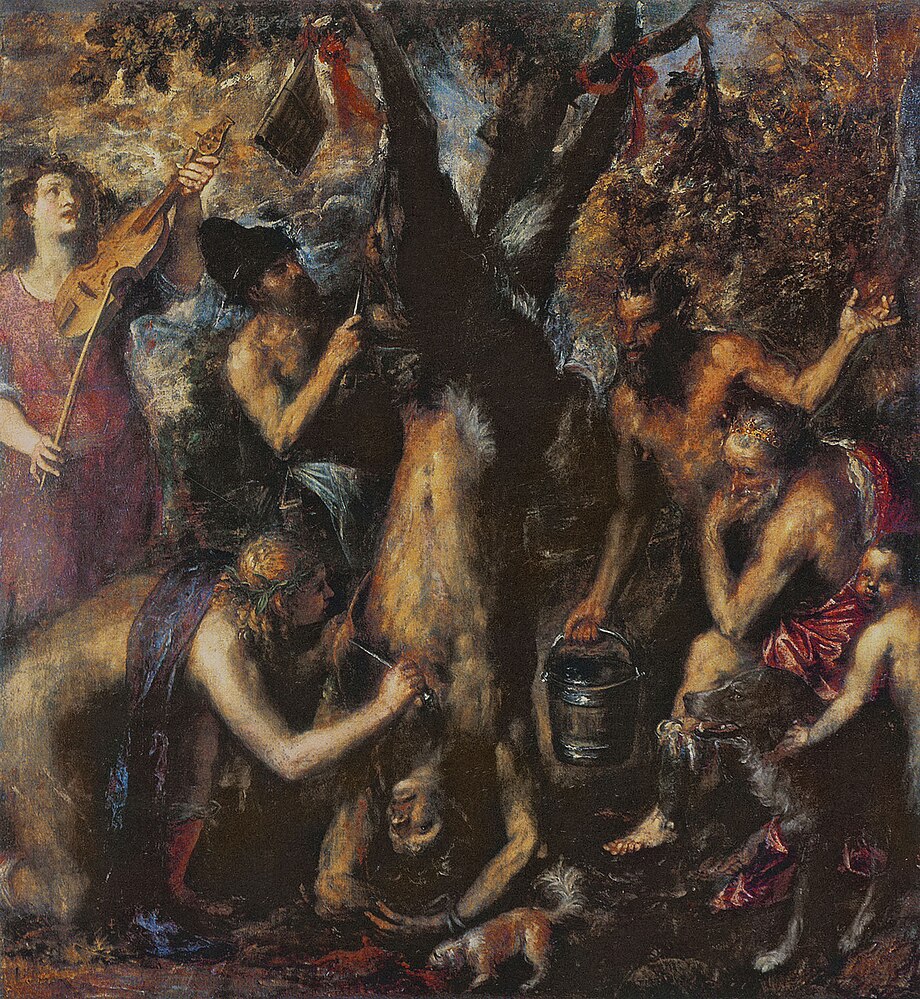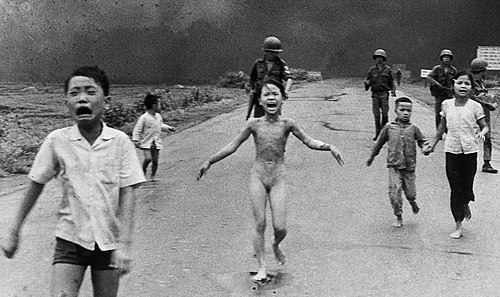… The Dragon Devouring the Companions of Cadmus, Hendrick Goltzius (1588)…
… Titian, The Flaying of Marsyas…
… Sontag is making the point that photographs differ from paintings in that they are not, in most cases, renderings of what a we imagine a horror to be, they are the horror itself once removed…
But there is shame as well as shock in looking at the close-up of a real horror. Perhaps the only people with the right to look at images of suffering of this extreme order are those who could do something to alleviate it—say, the surgeons at the military hospital where the photograph was taken—or those who could learn from it. The rest of us are voyeurs, whether or not we mean to be.1
… Goya, Los Desastres de la Guerra (The Disasters of War), eighty-three etchings depicting the brutality of Napoleon’s army when invading Spain in 1808 to put down the Spanish rebellion in 1808…
… why must there be brutality for the defeated?, to be thoroughly humiliated?, why do human beings work this way?…
… Sontag makes a point of the non-judgmental captioning of documentary photographs vs. the captions of Goya’s etchings which are very judgmental…
… a painting (sculpture, music score, etc.) is the creation of the artist and its first standard of relevance is the truth of its attribution… a (documentary) photograph’s first standard of reference is the truth of its contents… though authorship can become important when a photograph becomes collectible…
War was and still is the most irresistible—and picturesque—news. (Along with that invaluable substitute for war, international sports.2
… that sporting contests are wars for peacetime is an extremely interesting point, and explains the way news presentation makes war seem little more than sporting contest, at least in the beginning… i remember the broadcast of Operation Desert Storm… the same applies to political contests, with contests for presidency presented in a similar sporting event format… i have spoken of this before…
… The Valley of the Shadow of Death, Roger Fenton… a famous photograph that i have seen in a book somewhere, maybe Sontag’s book, On Photography…
… it appears that many iconic photographs of conflict were staged…
We want the photographer to be a spy in the house of love and of death, and those being photographed to be unaware of the camera, “off guard.” No sophisticated sense of what photography is or can be will ever weaken the satisfactions of a picture of an unexpected event seized in mid-action by an alert photographer.3
Only starting with the Vietnam War is it virtually certain that none of the best-known photographs were setups.4
After snapping the photograph, Ut took Kim Phúc and the other injured children to Barsky Hospital in Saigon, where it was determined that her burns were so severe that she probably would not survive. After a 14-month hospital stay and 17 surgical procedures including skin transplantations, she was able to return home. A number of the early operations were performed by Finnish plastic surgeon Aarne Rintala. It was only after treatment at a renowned special clinic in Ludwigshafen, West Germany, in 1982, that Kim Phúc was able to properly move again.5




